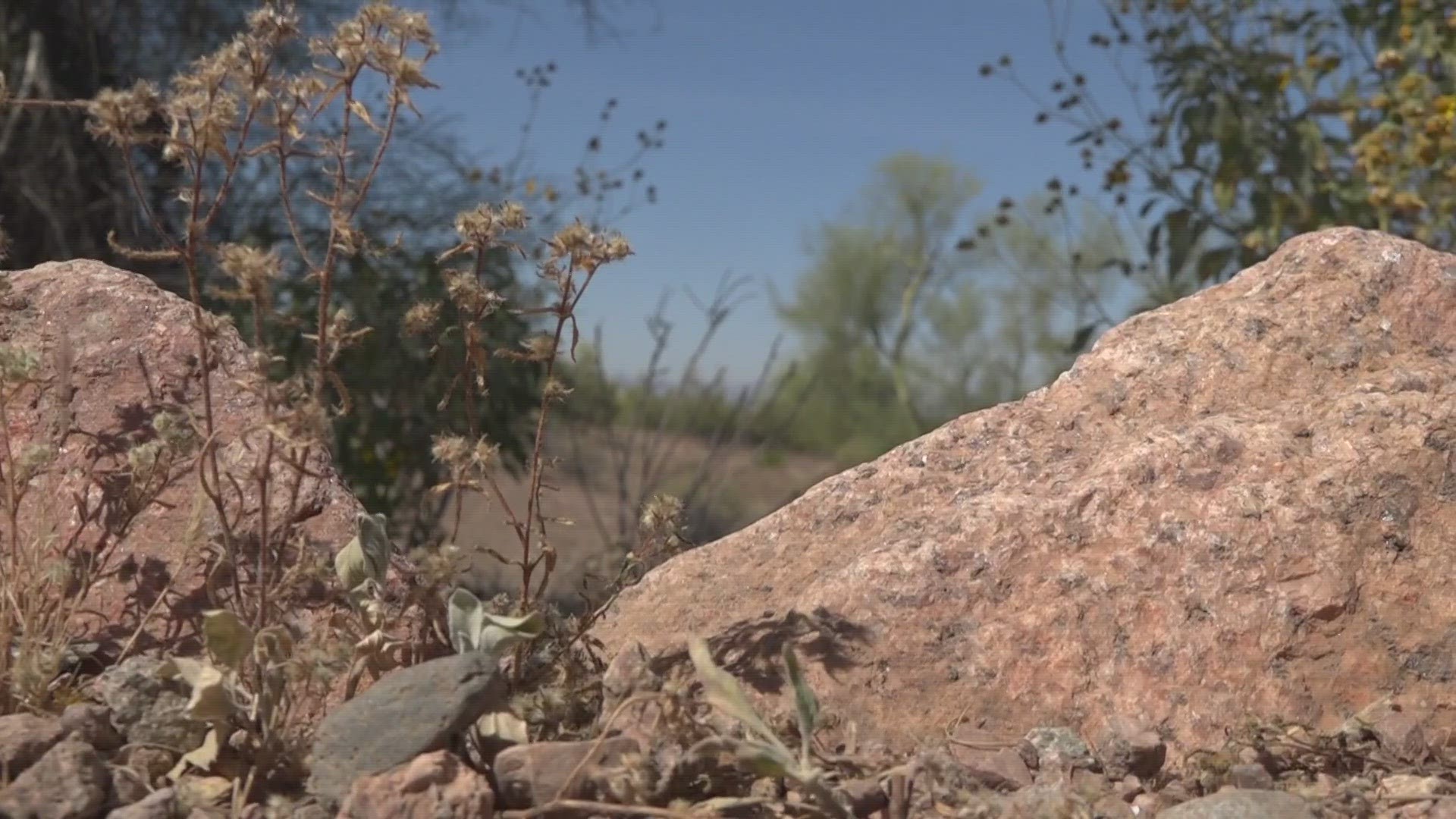ARIZONA, USA — Sharon Filip came to Arizona in 2001 to help move one of her sons to the University of Arizona.
After she returned home to Washington state a few weeks later, she began feeling sick.
"There's one day I woke up and I was so sick, I couldn't even get my head off the pillow," Filip said.
After blood work and other testing, Filip said she was diagnosed with Valley Fever.
"I felt as if someone was hitting my arm with a baseball bat every two inches and breaking it," Filip said. "The pain was so severe in my bones."
At the time, Filip said she didn't know that Valley Fever existed, and since then has worked to run a support group for Valley Fever survivors.
"I hope people when they start feeling sick that live there or go there, no to get themselves checked out right away," Filip said.
'Arizona's disease' found in Washington
The latest data from the Arizona Department of Health Services shows more than 11,000 people were diagnosed with Valley Fever in 2021. Most of those diagnosed were in Maricopa County.
"It really is a disease of the Southwest, we think of it as Arizona's disease," Dr. David Engelthaler, Director of the Infectious Disease Wing of the Translational Genomics Research Institute, TGen, said.
However, in recent years, Valley Fever has been found in South Central Washington State in specific spots with a few cases connected to it.
Engelthaler is among the group that studied how the disease known to affect the Southwest ended up states away.
"We also looked, really importantly, at the genomics of this fungus and inside the DNA of the fungus, it starts to tell us a bunch of secrets that we couldn't figure out," Engelthaler said.
The researchers found out where the fungus came from based on the changes in its DNA.
They believe that the Valley Fever that's in the soil in Washington came from the Central Basin of California likely between 7,000 and 10,000 years ago.
"It likely got moved up into that region several thousand years ago by a large infected animal, most likely human or a dog, and then got buried in the soil, and maybe stayed hidden," Engelthaler said. "Just kind of growing living underground, and then it gets disturbed and then cases started showing up maybe several thousand years later."
Research finds dust storms not spreading Valley Fever
The idea of soil disturbance is also containing clues as to how the disease spreads.
"We found the fungus isn't everywhere," Engelthaler said. "It's not everywhere all the time."
In a separate study, TGen placed air filters around the Valley to investigate how the fungus spreads.
"One of the common myths about Valley Fever is that the biggest risk is these giant haboobs and these dust storms," Engelthaler said.
However, Engelthalter said the research is busting the idea that dust storms spread Valley Fever.
"It doesn't seem to be associated with Valley Fever. It doesn't seem like those dust storms are really driving the fungus to get into the air for people to breathe," Engelthaler said. "We're not seeing it in the filters, we're not seeing increasing cases after these dust storms. They might still play a role, but we haven't figured that out yet."
Instead, TGen's research is finding hot spots of Valley Fever come and go, even in the most endemic of regions like Maricopa County.
"What that means is that the fungus is not just on the top surfaces of the soil. It is likely that the fungus is mostly below the soil, has to get disturbed - construction, gardening, digging - gets it up into the air and then we breathe it in."
Working to understand an often undiagnosed mystery
Engelthaler said the research is hoping to help answer questions surrounding Valley Fever, and when people and animals are most at risk.
"It's helping us answer a lot of questions about, are there important times of the year? Is there important weather events? Are there specific conditions which cause an increased risk for people to get exposed to Valley Fever?," Engelthaler said. "We haven't solved it all yet and we're still trying to unlock that mystery."
Often the disease itself is underdiagnosed. Dr. John Galgiani, the Director of the University of Arizona's Valley Fever Center for Excellence, found in a study with Banner Health in the Urgent Care group that, even with education, cases weren't being tested.
"I would say, a rough approximation is that probably four out of five cases are not being diagnosed, at least initially," Galgiani said.
Galgiani said often Valley Fever looks like a lot of other illnesses, especially pneumonia. Noing, it's important those with Valley Fever get diagnosed correctly so that people can not only stop getting treated for things they don't have but also get a treatment that would help.
"A small percentage of people get very, very sick from Valley fever. So the sooner you figure that out, the more you can use actually aggressive, appropriate therapy for those patients, and get them the treatment they need."
Up to Speed
Catch up on the latest news and stories on the 12News YouTube channel. Subscribe today.

